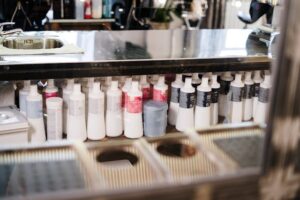If you’ve ever noticed your favorite garment losing its sleek look because of uneven or wavy seams, you’re not alone. Seam buckling is a common issue that can ruin the fit and appearance of clothing, leaving you frustrated and uncertain about how to fix it. Whether it’s a new outfit fresh out of the bag or a long-loved piece showing signs of wear, seam buckling detracts from the garment’s appeal and your confidence in wearing it. The good news? With a few simple techniques and a little understanding of what causes the issue, you can easily fix clothing seam buckling and restore your garments to their former glory.
Seam buckling happens for a variety of reasons: fabric tension during stitching, improper thread choice, or even washing and drying mishaps. Each case requires a tailored approach to resolve it effectively without damaging the garment further. In this guide, we’ll walk you through the most effective ways to fix clothing seam buckling, from quick DIY fixes to preventive measures you can adopt to stop it from occurring again. From adjusting your sewing technique to understanding how fabric reacts to stress, this comprehensive guide will help you save your clothes, time, and effort.
By the end of this article, you’ll not only know how to fix clothing seam buckling but also have a deeper appreciation for the craftsmanship behind well-made garments. Whether you’re a sewing novice or a seasoned DIY enthusiast, these tips will empower you to handle seam issues with confidence and precision. So, let’s get started on restoring your clothes to their pristine condition!
Understanding What Causes Seam Buckling
To effectively fix clothing seam buckling, it’s essential to understand the root causes of the problem. Seam buckling occurs when tension, fabric type, or improper stitching creates distortion along the seams, leading to an uneven or wavy appearance.
Fabric Tension During Sewing
One of the most common culprits behind seam buckling is excessive tension during sewing. When the thread is too tight, it pulls at the fabric, causing it to bunch up. This can happen with both machine and hand sewing. Understanding how to adjust tension settings on your sewing machine is crucial to prevent this issue.
Improper Thread and Needle Selection
Using the wrong thread or needle for your fabric can also lead to seam buckling. Heavy-duty threads on lightweight fabrics, for instance, can cause uneven stitching. Similarly, a needle that’s too thick or dull might tug at the fabric, creating puckers along the seam.
Fabric Shrinkage
Certain fabrics, like cotton or wool, may shrink after washing, pulling on the seams and causing buckling. To avoid this, always prewash your fabric before sewing to ensure it won’t shrink later.
Inadequate Pressing
Pressing seams as you sew is a vital step in garment construction. Neglecting this can lead to seam distortion. Proper pressing helps set the stitches, flattening the fabric for a smooth, professional finish.
External Stress on Seams
Overloading pockets, pulling on tight garments, or improper storage can stress seams, making them buckle over time. Being mindful of how you wear and care for your clothes can minimize this issue.
Tools and Materials You’ll Need to Fix Seam Buckling
Before diving into the methods to fix clothing seam buckling, gather the necessary tools. Having the right equipment ensures your fixes are effective and long-lasting.
Basic Tools
- Sewing Machine: Adjustable tension settings are a must for fixing seam buckling caused by tight stitching.
- Needles: Use size-appropriate needles based on your fabric type.
- Thread: Select a thread that matches your fabric’s weight and elasticity.
Pressing Tools
- Iron: A steam iron is ideal for flattening buckled seams.
- Pressing Cloth: Protects delicate fabrics from direct heat.
- Tailor’s Ham: Perfect for pressing curved seams.
Additional Supplies
- Fabric Stabilizer: Helps prevent distortion when resewing.
- Seam Ripper: For removing poorly sewn sections.
- Pins or Clips: To hold fabric layers together during resewing.
Step-by-Step Guide to Fixing Seam Buckling
Let’s explore actionable steps to fix clothing seam buckling. Whether you’re working with machine-sewn or hand-sewn garments, these techniques will ensure a seamless outcome.
Step 1: Assess the Damage
Examine the affected garment to determine the extent of the seam buckling. Identify whether the issue is isolated to one area or if multiple seams are affected.
Step 2: Remove Faulty Stitching
Using a seam ripper, carefully undo the stitches along the buckled seam. Take care not to tear the fabric in the process.
Step 3: Adjust Machine Tension
If the buckling occurred during machine sewing, adjust the tension settings. Refer to your sewing machine’s manual for guidance on achieving the correct balance.
Step 4: Stabilize the Fabric
For delicate or stretchy fabrics, apply a stabilizer along the seamline. This prevents further distortion during resewing.
Step 5: Reseam the Area
Use a matching thread and appropriate needle to resew the seam. Go slowly to ensure even stitches, and avoid pulling the fabric as you sew.
Step 6: Press the Seam
Set your iron to the appropriate temperature for the fabric and use a pressing cloth if needed. Steam the seam to flatten it, ensuring a smooth finish.
Step 7: Inspect and Adjust
Once pressed, examine the seam to ensure the buckling has been resolved. If necessary, repeat the steps or make minor adjustments to perfect the seam.
Preventing Future Seam Buckling
The best way to fix clothing seam buckling is to prevent it from happening in the first place. Here are some proactive steps you can take:
- Prewash Fabrics: Always wash and dry your fabric before sewing to account for shrinkage.
- Use the Right Tools: Invest in quality needles, threads, and stabilizers suitable for your fabric type.
- Adjust Machine Settings: Regularly calibrate your sewing machine to avoid tension issues.
- Press as You Sew: Never skip pressing between sewing steps to set your seams.
Fixing Seam Buckling in Specialty Fabrics
Each fabric type presents unique challenges when addressing seam buckling. Understanding the properties of your fabric ensures better results.
Silk and Satin
These delicate fabrics require lightweight threads and needles. Stabilizers are especially useful for preventing seam distortion.
Stretch Fabrics
For knits and spandex, use stretchable threads and a zigzag stitch to accommodate the fabric’s elasticity.
Denim
Heavier fabrics like denim require strong needles and thicker threads. Adjust machine tension accordingly to avoid puckering.
Sheer Fabrics
For chiffon or organza, use fine needles and clear stabilizers to maintain the fabric’s lightweight feel.
Conclusion: Fix Clothing Seam Buckling with Ease
Clothing seam buckling doesn’t have to mean the end of your favorite garment. By understanding its causes, gathering the right tools, and following simple, effective methods, you can restore your clothes to their original state. Whether it’s adjusting tension, stabilizing the fabric, or resewing the seam, fixing buckling is entirely manageable with patience and care.
Preventative steps like prewashing fabric, using appropriate materials, and pressing seams as you sew can save you the trouble of future repairs. For specialty fabrics, tailoring your approach ensures that even the most delicate garments can be fixed without damage.
With these tips, you can confidently fix clothing seam buckling and prolong the life of your wardrobe. A little effort goes a long way in keeping your clothes looking polished, comfortable, and ready to wear.





